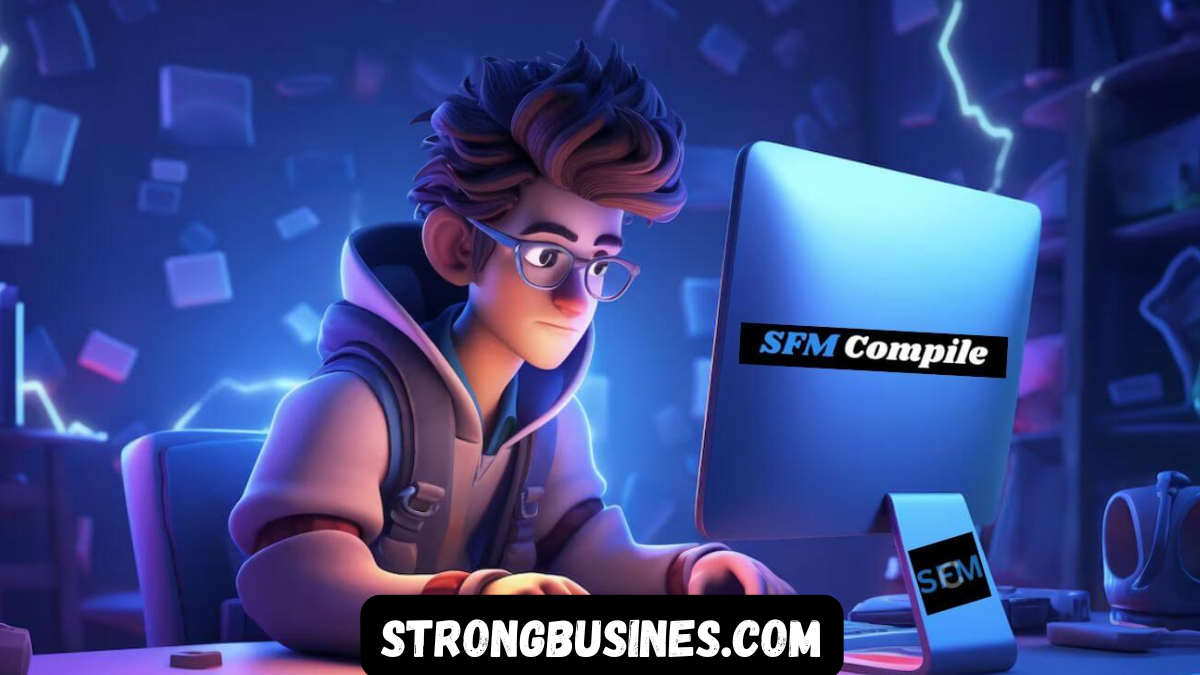Understanding the Basics of SFM
SFM Compile abbreviated as SFM, is a powerful animation tool developed by Valve Corporation. Designed primarily for creating animated movies using assets from the Source game engine, SFM has become an essential tool for hobbyists, content creators, and even professional animators. At its core, SFM provides users the ability to manipulate characters, scenes, and effects in a 3D space to produce visually compelling animations. However, one crucial part of the animation pipeline within SFM is the “compile” process—commonly referred to as “SFM compile.”
What Does Compile Mean in the Context of SFM?
In SFM, the term “compile” refers to the process of converting your animation or movie project into a final, playable video file. This is the stage where all the separate elements—models, lighting, camera movement, sound, and effects—are baked into a single cohesive file format, typically a video file like AVI or MP4. The compilation process allows animators to share their projects as videos that can be played on standard media players or uploaded to platforms like YouTube.
The Compilation Workflow in SFM
Before initiating a compile, users typically work within SFM Compile interface, where timelines, session files, animation sets, and cameras are managed. Once the creative aspect is completed, compiling transforms all this data into a rendered video. The compile process is not automatic; the animator must initiate it through the SFM interface. The rendering and compilation process can be time-consuming depending on the complexity of the project, the number of frames, and the effects involved.
Preview Versus Full Compilation
SFM offers the ability to preview animations using its built-in real-time engine, but this is not the same as compiling. Previewing is primarily useful for checking movement, timing, and camera angles. However, real-time previews often lack the high-quality lighting, depth of field, and post-processing effects that come with full compilation. Therefore, compiling is essential when aiming for high production quality.
Render Settings and Their Role in Compilation
When an animator chooses to compile their project in SFM, they are presented with several render settings that affect the final output. These include resolution, sample rate, and render quality. For example, increasing the resolution results in a sharper video but significantly increases rendering time. Sample rate affects how smooth the animation appears, especially for complex movement. Render quality settings determine how well lighting, shadows, and effects like ambient occlusion are processed in the final video.
Common Challenges During SFM Compilation
One of the most common issues users face during the compile phase is system performance. Since SFM is a resource-intensive tool, older or underpowered computers can struggle with rendering high-quality videos. Long rendering times, crashes, and incomplete videos are common complaints in the SFM community. Managing system resources effectively, such as by closing unnecessary background applications, can help improve compile performance.
Another frequent issue is corrupted output files. This can happen if the project timeline has errors or if incompatible codecs are selected. To mitigate this, users often run test renders or compile short sections of their project before committing to rendering the entire timeline. This helps identify issues early and avoid wasted time on faulty compiles.
Codec and Format Selection in Compilation
When compiling in SFM, selecting the right codec and output format is essential. AVI is the default format supported by SFM, but it can result in very large file sizes. Many users opt to compile their project in uncompressed AVI format and then use a video editing program to convert it into a more manageable file size using formats like MP4 or MOV. While SFM itself doesn’t support many codecs natively, the use of third-party encoders after the initial compile is a standard practice.
Use of Console Commands During Compile
SFM includes a command-line console, which advanced users utilize during the compile process. These console commands can be used to customize render settings further, debug issues, or even automate certain aspects of the workflow. For example, commands can be used to initiate a render from a script, specify frame ranges, or direct the output to specific directories. While not necessary for casual users, mastering console commands can significantly streamline the SFM compile process.
The Role of Shot Export and Image Sequences
In addition to compiling into video files, SFM also allows exporting projects as image sequences. This means every frame of the animation is saved as an individual image file. This method is preferred by professional animators and editors because it allows for frame-by-frame manipulation during post-production. After exporting an image sequence, software like Adobe Premiere Pro or After Effects can be used to stitch the images together and apply additional effects, color correction, or audio tracks. Compiling through image sequences also reduces the risk of losing progress due to a crash, as individual frames remain saved.
Tips for a Smooth Compilation Experience
For the best experience when compiling in SFM, preparation is key. It’s crucial to ensure that all assets, including models, textures, sounds, and lighting setups, are fully loaded and functioning before attempting to compile. Checking the timeline for broken links, missing files, or animation glitches is also essential. Users should also consider disabling anti-aliasing and motion blur during previews to reduce render time and only enable them for the final compile.
It’s also recommended to save the project frequently under different file names. This way, if the compile process encounters a bug or crash, you can revert to an earlier version without losing significant progress. Proper naming conventions and folder organization also help avoid confusion when managing multiple scenes or projects.
Hardware Considerations for Compilation
The compile process in SFM is heavily reliant on the computer’s hardware. A fast processor, a powerful GPU, and a sufficient amount of RAM can greatly improve compile times and prevent crashes. SSD storage can also speed up the read/write processes involved in rendering. For users working on larger projects or at higher resolutions, upgrading hardware components may be a necessary investment to ensure a smooth and efficient compile process.
Post-Compilation Workflow
Once the video has been compiled, it usually enters a new phase of the creative pipeline—post-production. This stage includes adding music, sound effects, titles, transitions, and color grading. While SFM does allow for some basic audio and effect integration, most animators prefer using professional editing software to polish their compiled videos. This is where the value of high-quality compiles becomes apparent. A well-rendered video retains clarity and visual integrity even after further edits and compressions.
File Management and Storage After Compilation
Compiled videos can take up a significant amount of disk space, especially when using uncompressed formats. It’s important to have a file management strategy in place. This includes organizing folders by project, labeling files with timestamps or version numbers, and regularly backing up important work. Many SFM users also utilize cloud storage or external drives to archive completed projects while freeing up local disk space for new ones.
Community Insights and Best Practices
The SFM community is an invaluable resource for tips, tutorials, and troubleshooting advice related to compilation. On forums and platforms like Reddit or Steam Community, users often share render settings, script templates, and time-saving hacks. Engaging with the community not only provides solutions to common compile problems but also offers inspiration and creative motivation.
Many of the best practices in SFM compiling have emerged from collective experience. These include rendering in segments, using dummy scenes to test effects, and applying global lighting changes before initiating the compile. Animators are encouraged to share their findings and challenges to continue evolving the knowledge base around SFM compiling.
The Evolution of Compile Features in SFM
Since its release, SFM has undergone updates that have improved the compile process. These include better handling of memory, support for higher resolutions, and more intuitive export settings. Although SFM still lacks some of the polish of modern professional animation tools, its free availability and tight integration with Source Engine assets make it an enduring choice for creators.
Valve has hinted at possible future support for better codecs and improved rendering pipelines, although development updates have slowed in recent years. Still, third-party tools and user-generated content have kept SFM relevant. Improvements to the compile process often come from community-developed plugins or workarounds.
Creative Potential Unlocked by Compilation
Compiling is more than just the final step in the animation process—it’s the bridge between creation and presentation. It transforms a fluid, editable project into a shareable, concrete product. For many SFM users, the moment of compilation is both exciting and nerve-wracking, as it represents the culmination of hours, days, or even weeks of meticulous effort.
Seeing the final compiled version of an animation can reveal flaws that went unnoticed during preview, but it can also illuminate the brilliance of a well-executed shot, a clever camera angle, or a moving character expression. Therefore, the compile phase in SFM is both technical and deeply artistic.
Conclusion Mastering SFM Compilation
SFM compile is a critical skill for any serious user of Source Filmmaker. It involves much more than clicking a button to export a file. It requires understanding render settings, managing hardware limitations, preparing scenes correctly, and often dealing with complex issues such as codec compatibility or software bugs. Mastery of SFM compiling allows animators to present their work at the highest quality, ensuring that the time and creativity invested in a project are fully realized in the final product.
Whether you are a beginner looking to render your first video or an experienced animator pushing the limits of what SFM can do, compiling is the ultimate test of your workflow. It demands attention to detail, patience, and a willingness to iterate. With practice and the right knowledge, anyone can turn their animations into professional-grade videos using the powerful tools that SFM provides.
Frequently Asked Questions
What file format does SFM compile to?
SFM primarily compiles to AVI format. Users can then convert it to other formats like MP4 using third-party tools.
Why does my SFM compile crash?
Crashes often occur due to high memory usage, incompatible codecs, or corrupted project files. Reducing resolution or breaking the project into smaller segments can help.
Can I compile only part of my timeline in SFM?
Yes, you can specify a frame range to render a portion of your timeline, which is useful for testing or rendering in segments.
Is it possible to add effects after compiling?
Yes, most users compile in raw quality and then SFM Compile use video editing software like Adobe Premiere or Sony Vegas to add effects, transitions, and audio.
Does compiling in SFM include audio?
SFM can include audio tracks during compilation if they are properly set in the timeline, but advanced audio editing is usually done in post-production.





